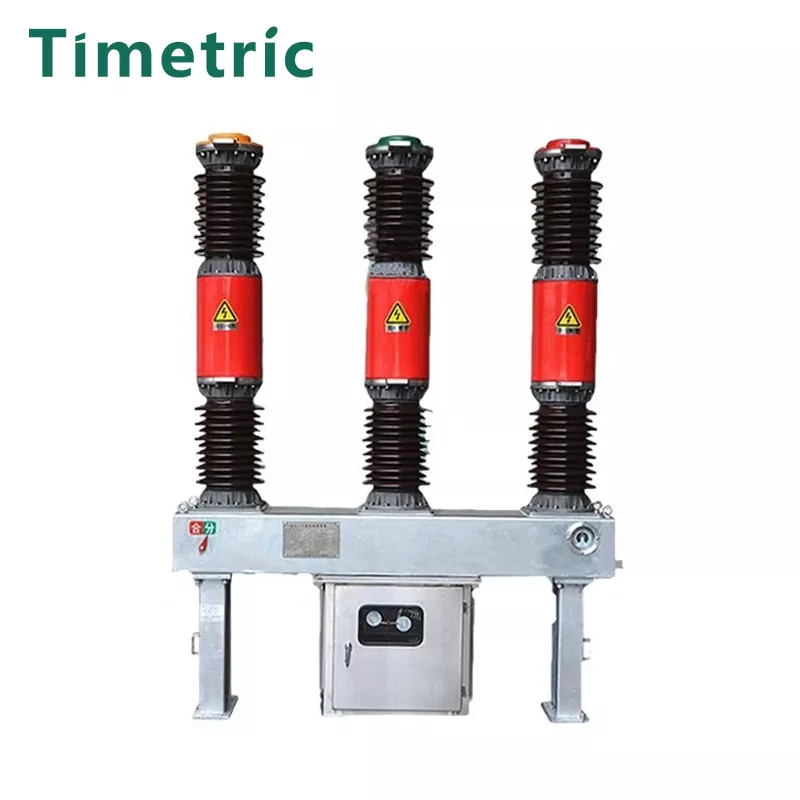How Do Puffer Type SF6 Circuit Breakers Enhance Operational Safety
2025-11-03
When we talk about high-voltage electrical protection, the discussion always comes back to one non-negotiable priority operational safety. As a professional with decades in the field, I have seen how the puffer type SF6 circuit breaker has set a benchmark for safety, a standard that we at Timetric have committed to through our advanced engineering. The core of its safety lies in a brilliantly simple and self-contained mechanism. Unlike older designs, the puffer type SF6 Circuit Breaker uses the mechanical force of its own opening to compress the SF6 gas, creating a powerful blast that extinguishes the arc reliably every single time. This eliminates dependencies on external pressure sources, making the unit exceptionally robust and fail-safe.
What Specific Design Parameters Make Our Puffer Type Breakers So Safe
Our Timetric engineers have optimized the puffer-type mechanism around several critical parameters that directly translate to enhanced safety for personnel and infrastructure. The key is in the sealed, single-pressure system.
-
Hermetically Sealed Interrupter Unit: This prevents moisture ingress and gas leakage, maintaining the dielectric strength of the SF6 gas and preventing internal faults.
-
Corrosion-Resistant Puffer Cylinder: Manufactured from specialized materials to ensure smooth, consistent operation over thousands of cycles, guaranteeing performance even after long periods of inactivity.
-
Integrated Gas Density Monitor: This crucial safety device provides a live reading of the gas pressure inside the tank, offering an immediate warning of any abnormal condition that could affect performance.
The following table summarizes the key safety-focused specifications of our standard Timetric puffer breakers:
| Parameter | Specification | Safety Implication |
|---|---|---|
| Rated Breaking Current | 40 kA - 63 kA | Ensures reliable interruption of the most severe fault currents. |
| SF6 Gas Pressure | 5.5 bar (absolute) | Optimized for superior arc quenching while maintaining structural integrity. |
| Mechanical Endurance | M2 Class (10,000 operations) | Proves exceptional long-term reliability, reducing the need for intrusive maintenance. |
| First-Pole-To-Clear Factor | 1.2 / 1.3 / 1.4 | Certified performance in various earthing conditions for predictable safety. |
Your Top Questions on Puffer Type SF6 Circuit Breaker Safety Answered
FAQ 1 How does the puffer mechanism directly prevent electrical failures
The puffer mechanism is physically linked to the moving contact. During a fault opening, it instantly compresses the SF6 gas, creating a blast that cools and de-ionizes the arc plasma with extreme reliability. This direct mechanical coupling means the quenching action is inherent and instantaneous, leaving no room for the control system delays that could compromise safety in other breaker types.
FAQ 2 What happens if there is a minor leak in the SF6 gas system
A minor leak is precisely why a gas density monitor is a standard safety feature, not an option. This monitor tracks pressure relative to temperature. If the density drops below a pre-set safe level, it will send an alarm before the dielectric strength is compromised, allowing for scheduled maintenance and preventing the breaker from operating in an unsafe state.
FAQ 3 Are puffer type SF6 circuit breakers safe for use in seismically active areas
Absolutely. The robust, self-contained design of a puffer type SF6 circuit breaker is inherently advantageous. At Timetric, we offer additional seismic certification testing on our breakers, proving they can withstand significant seismic events without damage to the interrupter or operating mechanism, ensuring safety remains intact during and after an earthquake.
The inherent safety of the puffer design is why it remains the core of our high-voltage SF6 Circuit Breaker portfolio at Timetric. We build upon this reliable foundation with enhanced monitoring and ruggedized construction to deliver a product that protects your most critical assets. For a detailed safety case study or to discuss your specific application requirements with our engineering team, do not hesitate to contact us today.
